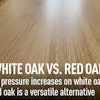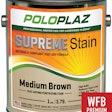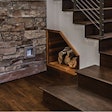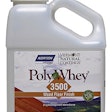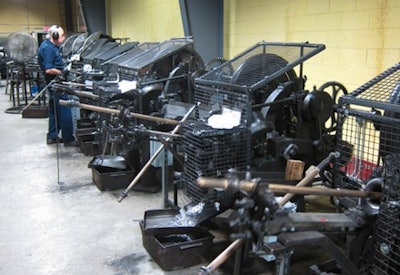
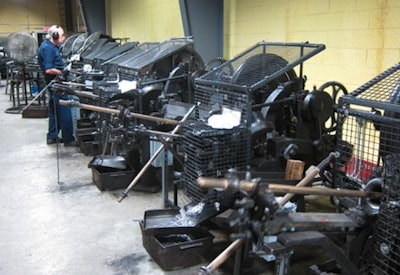
This is not directly about green, but it is about a traditional way of doing things.
A few weeks ago, I had the great pleasure of touring the Tremont Nail manufacturing facility and it was truly fascinating. I've long since lost count of the number of wood manufacturing facilities I've been in, but this was my first nail production company. And this is not an ordinary nail producer-Tremont's been making nails for 193 years. And the machines they use now are virtually identical as those used nearly two hundred years ago.
I probably asked Larry Bickett far too many questions about his production, but he patiently answered everything. To save the poor man from repeating himself for the next set of inquiries, I thought I'd tell you about the nails they provide for the flooring industry. They've got lots of options, both with decorative faces and for a hidden install through the side of the board.
Their "Flooring Nail" is designed for side nailing through the T&G. Most flooring nails are hardened, but Larry says it is not really necessary. Larry explained that it was just a tradition, although he thinks it was started under the premise that a harder nail would better penetrate woods like Red Oak. He also explained that the blunt tip (compared to the sharp point of the now more common 'wire nail') minimizes the splitting of wood.
If you are seeking to install with the nail head exposed on the face, their best selling "Common Nail" is the most popular for that use. Additional options would include the "Wrought Head, " the "Clinch Rosehead," and the "Firedoor Clinch." Larry warns that the Rosehead and Wroughthead are both raised heads-which would not be very good for sanding a floor later. The Firedoor Clinch and Common nails can both be set flat or sunk.
Tremont provides four finish options for their nails. "As is" or "mill finish" is just as it comes out of the machine. A heat hardened nail will change the color slightly, but the purpose real is to add strength. Hardened nails often will rust, but are usually used for concrete or other tough materials. Their "Hot dipped galvanized" provides some additional rust protection, and is used mostly for exterior applications. This is a zinc coating, and not really used much in flooring nails.
On the other hand, the black oxide finish is quite popular for the face nails. This is a color change only, provides minimal additional rust protection. This was my favorite appearance.
Larry had a few neat bits of nail trivia. The "d" used in referring to measures refers to the Roman coin dinerias. Why? That was the cost per 100 pieces of a nail of a certain size. In the case of a 3 penny nail, you could buy 100 of those sizes for 3 dinerias. The "d" now only refers to length, but that's the origin. Wood nails are identified by penny length, but other nails often have other descriptions.
It was a great morning, and if you're seeking something special for your next install, take a look at these Tremont Nails.













